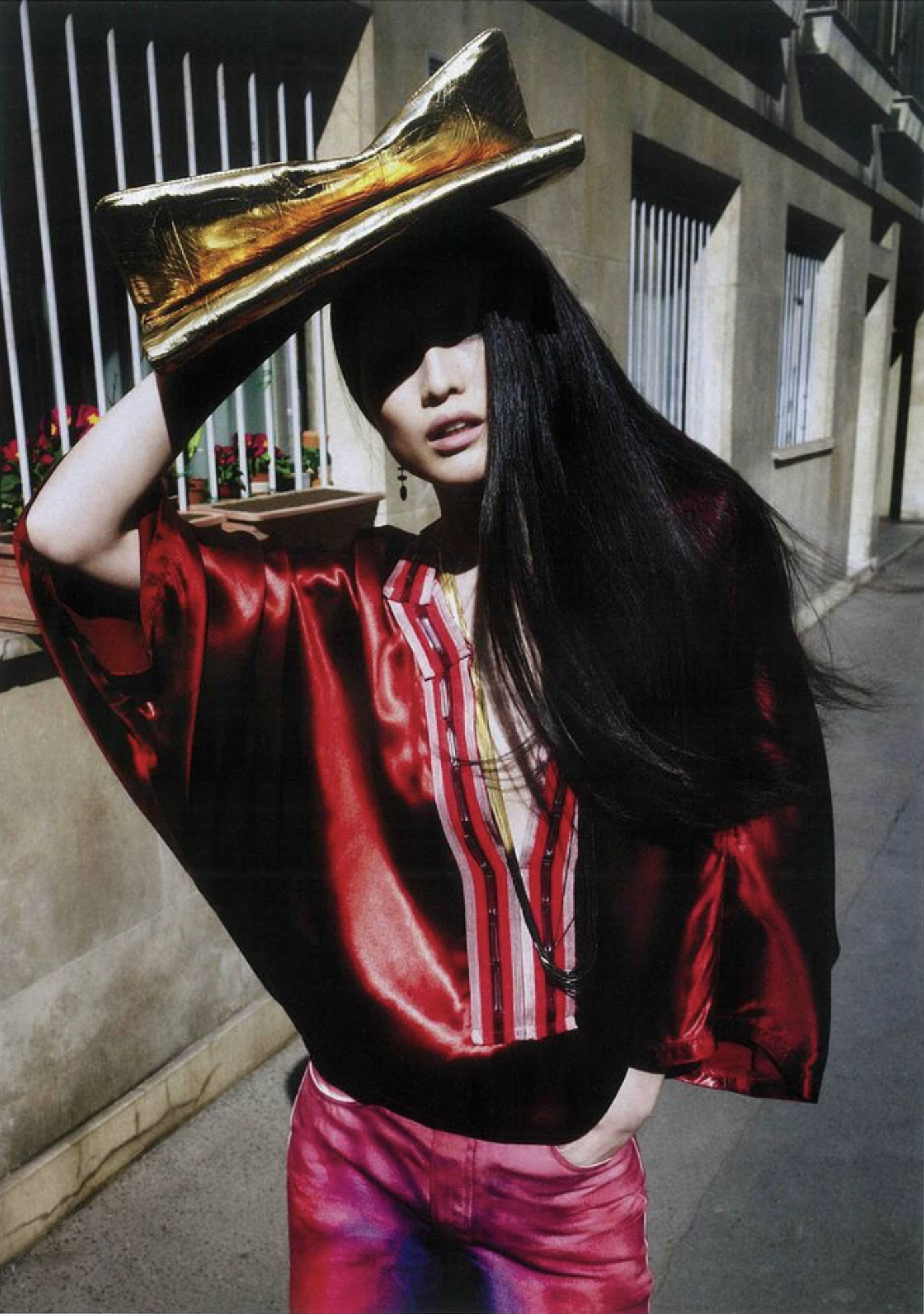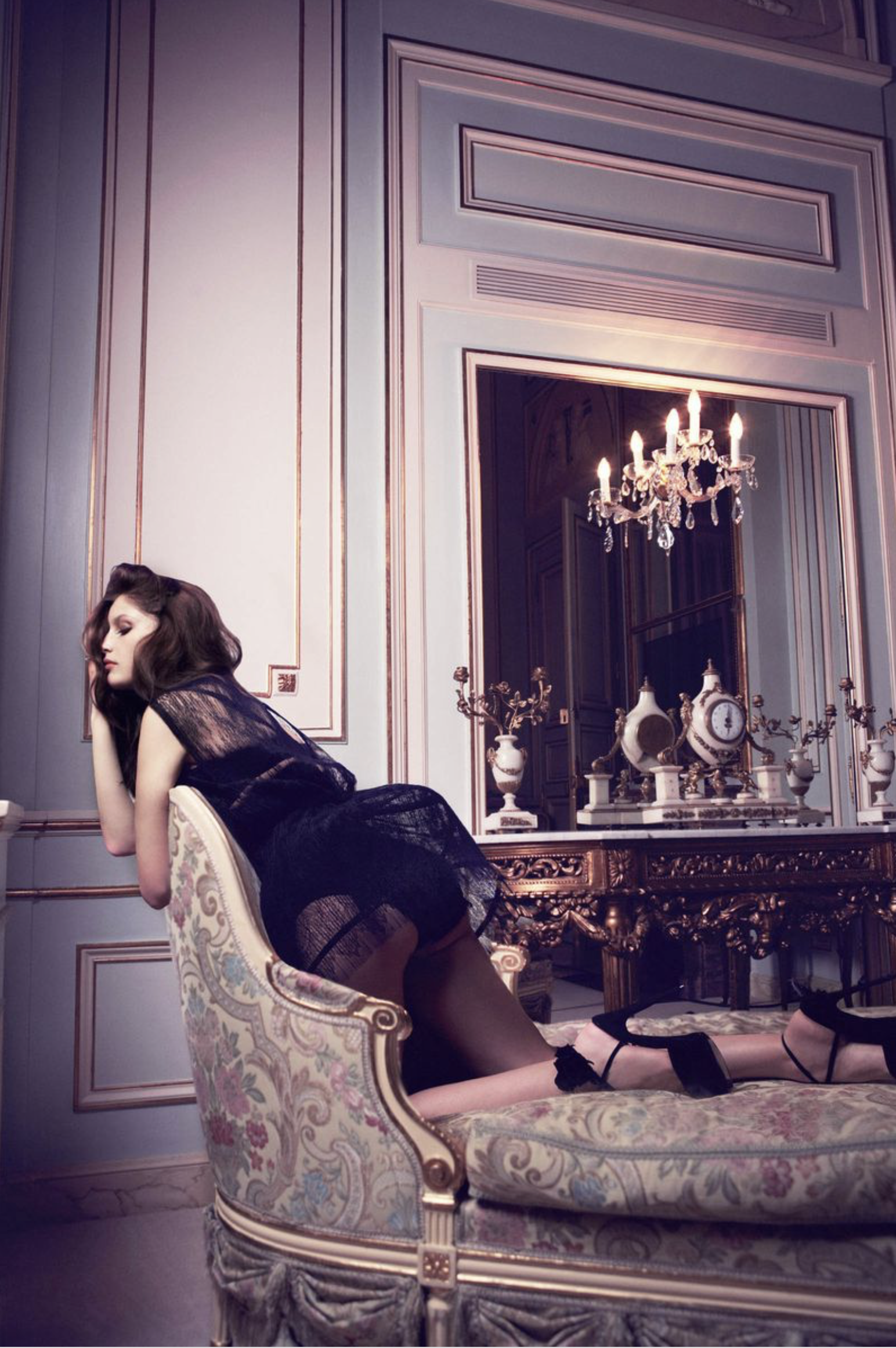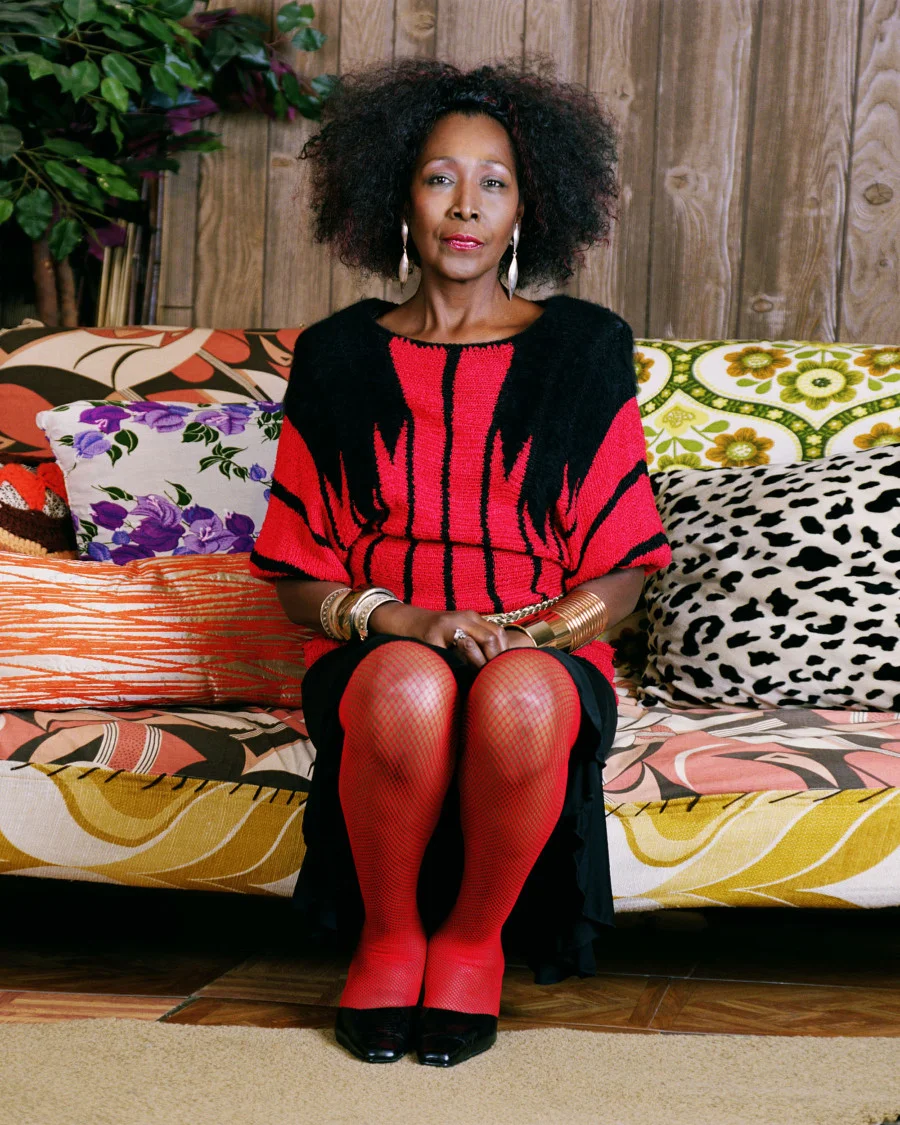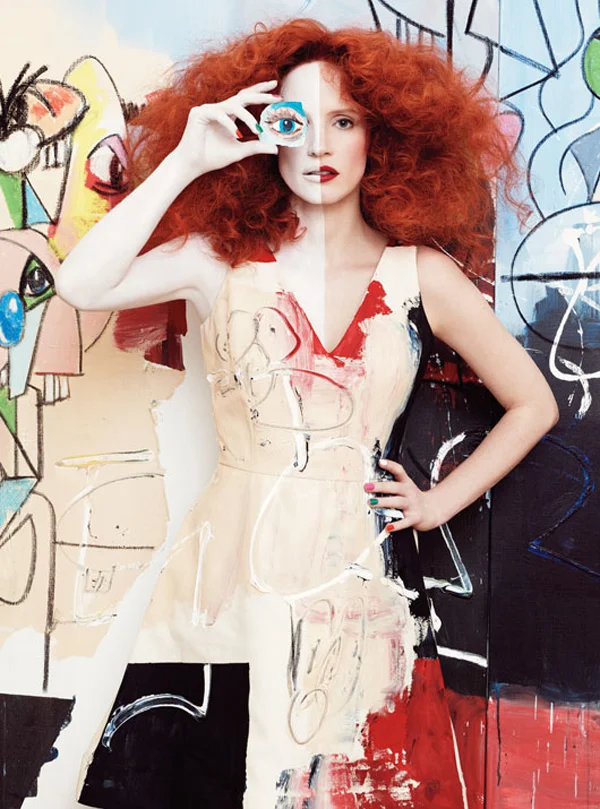The Fierce Pride and Passion of Rhinestone Fashion | We Spend Time With Mickalene Thomas
/By Anne Showalter for Smithsonian.com
ontemporary artist Mickalene Thomas is best known for her large-scale paintings of black women posed against boldly patterned backgrounds and adorned with rhinestones. Illustrative of the artist’s signature style, her 2010 Portrait of Mnonja depicts a striking female figure reclining on a couch.
Visitors, who find their way to the high-ceiling third floor gallery of the Smithsonian American Art Museum, consistently gather round this painting, fascinated by its bright colors and drawn to its subject—an elegant and poised African-American woman.
“She is owning and claiming her space, which is very exciting,” reveals the artist in a 2017 SAAM interview. The woman’s crossed ankles are perched on the sofa’s armrest, and her fuchsia high heels dangle over the edge. Her right hand rests on her knee and her fingers evoke a dancer’s enviable combination of strength and grace. Exuding an air of power and sophistication, Mnonja literally sparkles from head to toe—her hair, makeup, jewelry, clothes, fingernails and shoes all glisten with rhinestones.
Diana Baird N’Diaye, a cultural specialist and curator at the Smithsonian’s Center for Folklife and Cultural Heritage, who has long studied the way that style and adornment convey identity, explains: “We dress ourselves with an aesthetic in mind, with a template in mind. It may be the community that we identify with. It may be the music we identify with. It may be where we come from...our status or the status that we aspire to… I always say that even if you wear nothing but T-shirts and jeans and you think that ‘I'm really not dressing for any reason,’ you're always dressing with some idea of your identity in mind and how you project it to others.”
A particular area of focus for N’Diaye is a project that looks at African-American dress and the aesthetics of cultural identity: “One of the major things that I think is distinctive about African-American dress is its intentionality and its agency…there are many, many aesthetics in the African-American community. There's not just one, but if you scratch the surface, they're all about what Zora Neale Hurston once called ‘the will to adorn,’ one of the most important parts of African-American expression. So it's also an art form.”
Style, identity and agency are fundamental themes in the work of Mickalene Thomas. “She’s really interested in presenting positive images of black women that explore ideas of identity and sexuality and power,” says Joanna Marsh, the museum’s head of interpretation and audience research. “She’s also really interested in ideas of style and self-fashioning.” In fact, Thomas’s connection with fashion stems, in part, from her personal biography. Her mother, Sandra Bush, was a model in New York in the 1970s and was the artist’s first muse.
Note: Sandra Bush died in 2012, and Thomas talks about her at length in the artnet video interview.
Sandra Bush, Mickalene Thomas’ Mother
Thomas’s artistic process embraces the concept of the “will to adorn.” Her work typically begins with a photo shoot. She invites her subjects, many of whom have personal relationships with the artist, “to come to her studio to dress up or get styled and then pose in a setting that she’s created... a kind of tableau or stage set, if you will,” explains Marsh. “This photo session becomes a kind of performance. Not unlike the way we all perform when we get dressed in the morning and walk out in public and are presenting ourselves to the world in a certain way.”
Thomas then takes the photographs that come out of these sessions and produces photo collages; finally, from these collages, she creates large-scale paintings using acrylic, enamel and rhinestones.
Why rhinestones? On one level, this non-traditional element is a nod to female artists who have historically used craft materials in their work and to outsider artists who use everyday objects as their medium.
But the origin story for the presence of rhinestones in Thomas’s work is also tied to economic factors. As an art student, when Thomas could not always afford traditional art supplies like expensive paint, she began purchasing relatively inexpensive materials from local craft stores: “I began going to Michael’s craft stores because I could afford felt and yarn and these little bags of rhinestones and glitter... I began to acquire these materials and find meanings and ways to use them in my own work as a way to identify myself.”
“Over time, these rhinestones became a kind of signature element of her work,” Marsh notes. Both literally and figuratively, the rhinestones add a layer to Thomas’s art: “On the most basic level, they’re a kind of decorative element. But they’re also a symbol for the way we adorn ourselves.”
In the words of the nonagenarian style icon Iris Apfel: “Fashion you can buy, but style you possess. The key to style is learning who you are... It’s about self-expression and, above all, attitude.”
One of the ways that we learn about who we are is by seeing ourselves reflected in historical and popular narratives, whether that may be a textbook, a television show, or an art exhibition.
Historically, black women have been stereotyped, marginalized, or altogether missing in these narratives. Thomas is very invested in creating a more inclusive museum environment for young people of color so that “when they are standing here…they see themselves.”
In this way, Portrait of Mnonja is both a masterful painting and a glittering example of the intentionality and agency at the heart of African-American expression.
Related content about MIckalene Thomas
T- Magazine July 2019: Mickalene Thomas and Racquel Chevremont have a Pool Party
Set on six and a half acres of lush rolling hills, Thomas and Chevremont’s property, a two-and-a-half-hour drive north from Manhattan, provided everything guests needed to unwind: apple trees and hiking trails, a pool brimming with inflatable toys and an art barn, Thomas’s studio away from home, stocked with board games. Monopoly and nature walks, however, don’t amount to a memorable summer party by themselves, Chevremont said. Her advice: “Make it unexpected. We like to challenge people physically.” Guests were treated to an abundant spread of home-cooked food and spicy cocktails — Chevremont oversaw the crawfish boil while Thomas mixed margaritas infused with chiles — but there was also a jam-packed lineup of activities. Guests partook in couples’ jousting in the pool, turns on the aerial hoop suspended from the barn ceiling and rides on a bucking inflatable bull. The beauty of hosting friends at the house is watching them “let their guard down and be a kid again,” Thomas said, noting the power of the zip line to bring visitors out of their comfort zones. On the 75-foot-long downhill Slip ’n Slide, added Chevremont, a sprinkling of Johnson’s baby shampoo helps guests to really go the distance: “You might finish the last 8 to 10 feet in the grass.”














